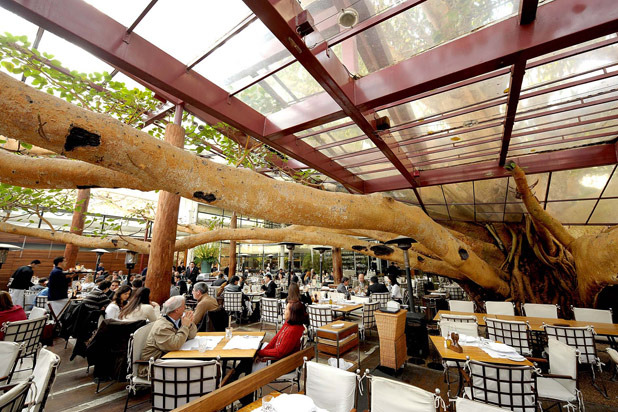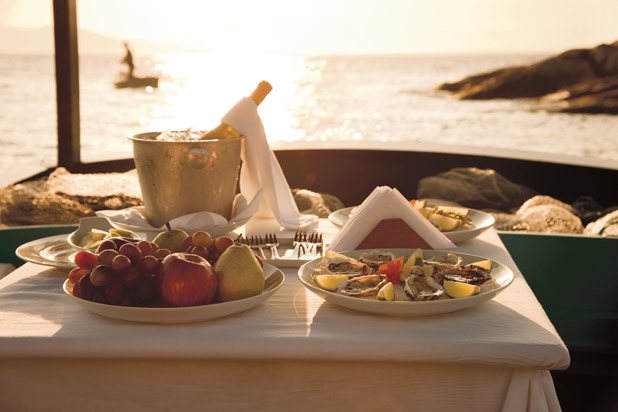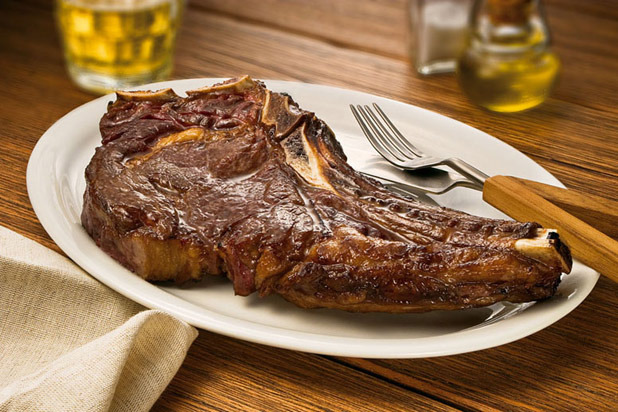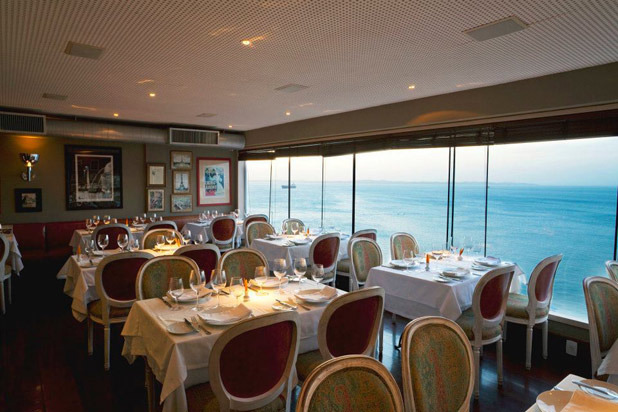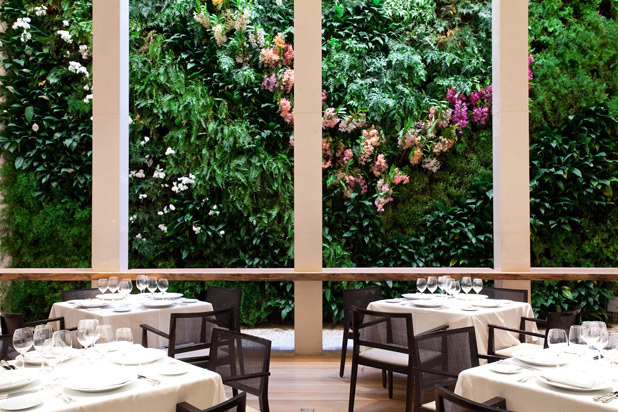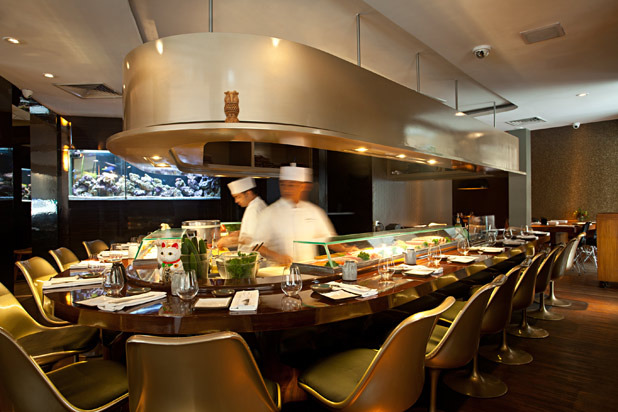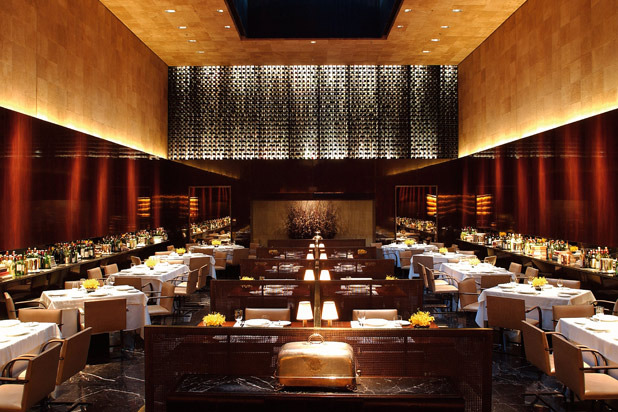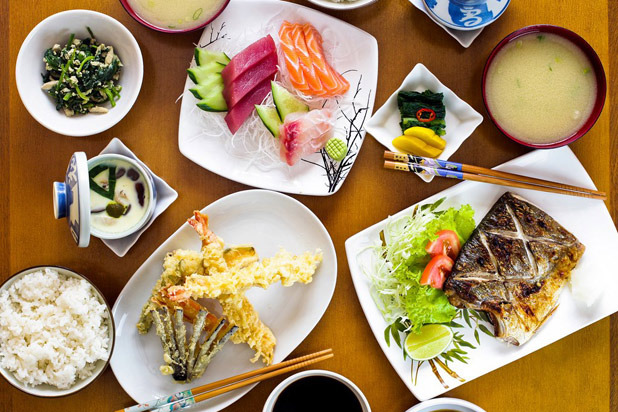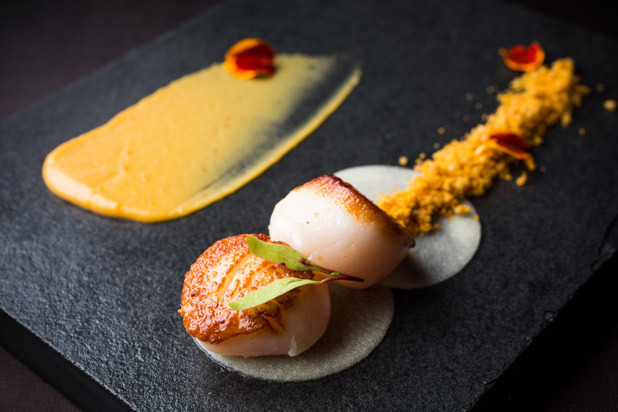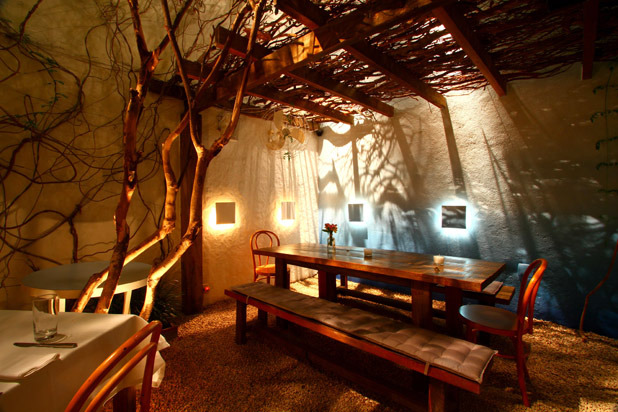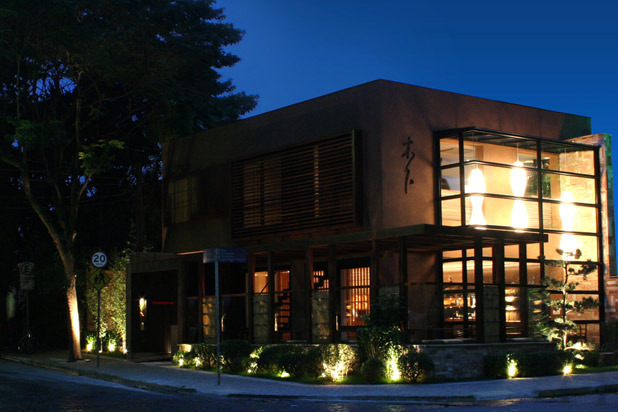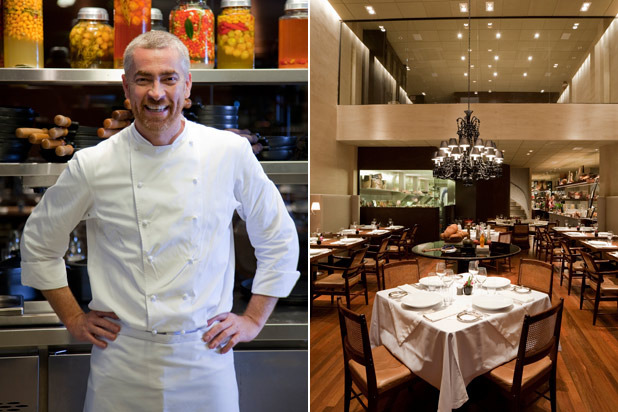17 Best Restaurants In Brazil (Slideshow)
Opened in 2001, this classic Brazilian restaurant is known for its steak and its beautiful dining area built around a massive fig tree, more than 25 feet in diameter and 130 years old. The menu specializes in beef, as well as other proteins such as suckling pig, and Rubaiyat's meat is sourced from the restaurants own farm. The kitchen focuses on ancient cooking techniques and uses old cooking tools such as steel pans and earthenware ovens. Besides Rubaiyat's famous meat, diners can enjoy seafood dishes such as grilled sea bream, and seafood stew with octopus, scallops, shrimp, squid, and fish. A Figueira Rubaiyat is one of six restaurants in the Rubaiyat group, which has outposts in Peru and Spain, as well as other restaurants in São Paulo.
16. Restaurant at Ponta Dos Ganchos (Governador Celso Ramos, Brazil)
Some diners grow tired of a menu that never changes, so the restaurant at Brazil's Ponta Dos Ganchos makes sure that its guests are never bored, by "astonishing" them with a menu that changes daily. That menu incorporates local fish, prawns, oysters, and mussels freshly caught on the island, as well as ingredients grown in the restaurant's organic kitchen garden. And no wine lover will ever be bored here, with more than 250 choices, including South African, French, Portuguese, Australian, New Zealand, Italian, German, Spanish, Argentinean, Chilean, Brazilian, and North American vintages. Because everything at Ponta Dos Ganchos is about that "wow" factor, guests are welcome to enjoy a meal from Ponta Dos Ganchos wherever they please: on the island, on the beach, or in the restaurant.
15. Bar do Mineiro (Rio de Janeiro)
Ask anyone in Brazil, and they'll most likely tell you that Minas Gerais is the place for the best food in the country. If you're not going to be in Minas, one of the next best things is to stop by the Bar do Mineiro toward the top of the Santa Teresa hill in the center of Rio de Janeiro, an area famous for its winding, narrow streets. A restaurant as well as a bar, the place serves generous portions of feijão tropeiro (beans with sausage, served over rice), an assortment of pasteis (savory pastries), frango com quiabo (stewed chicken with okra), and of course feijoada.
14. Aconchego Carioca (Rio de Janeiro)
Located in the northern outskirts of Rio de Janeiro's city center, Aconchego Carioca is a popular neighborhood eatery and bar, offering traditional Brazilian fare with a twist, and a wide selection of beer. With a seedy past of low-income housing and prostitution, the Praça da Bandeira neighborhood might still not be one of Rio's finest, but is rapidly changing, and the weekend crowds standing in line for a table here are a sign clear sign of the growing gentrification. The fare includes bolinho de feijoada, mini "feijoada cakes," a play on the traditional Brazilian dish feijoada, a hearty mix of beans and pork. In Aconchego Carioca's version, black beans and collard greens are battered and fried into small balls and eaten with torresmo (cracklings). For a uniquely Brazilian dessert, try the palitos de queijo coalho com goiabada cremosa — sticks of lightly battered and fried cheese served along with a guava jam (the dish looks suspiciously like french fries and ketchup). Besides the hearty food, diners can choose from an extensive beer list of around 250 beers, including both imported and local specialties.
13. Kaa (São Paulo)
Even the most hardened world travelers, the most citified of city dwellers will likely admit to you that the first time they landed in São Paulo, the vastness of the city was overwhelming. With an ever bigger population than New York City, its concrete jungle seems to stretch on even farther into the horizon. With that kind of density, it should perhaps not surprise that one of São Paulo's most buzzed about restaurants over the past few years is Kaa (the Tupi word for leaf, grass, and brushwood), which offers the refuge of a secret garden — a wall about 26 feet high and more than 200 feet long featuring more than 7,000 plants native to Brazil's Atlantic forest (the restaurant was designed by architect Arthur Casas). But it's not just the space that impresses at Kaa — there's Italian food by chef Paulo Barros to match, and that's saying something for a city with no dearth of good Italian restaurants (São Paulo is said to have the second highest population of people with Italian ancestry in the world). Bauletti stuffed with guinea hen, ricotta, and truffled mushroom sauce; panciotti stuffed with braised beef brasato in creamy lentil sauce; veal shank confit; and at least five different risotto preparations...delicioso!
12. Sujinho (São Paulo)
Sometimes character, legend, and patina take great food to a new level of restaurant experience. That's the case at Sujinho in São Paulo, a simple old-school churrascaria that has been popular with locals for decades for serving great food at amazingly low prices until the wee hours of the morning (it's still known to Paulistanos of a certain age as the "Bar das Putas" for those who 30 years ago would end their shifts there after an evening selling the pleasures of the flesh). The restaurant (and the area) has cleaned up, but you can still expect character, setting, and on-point espeto misto (mixed grilled meats) and picanha (the classic Brazilian top sirloin cover cut).
11. Chez Bernard (Salvador, Brazil)
Chez Bernard, which celebrated its 50th anniversary in June, was founded by Bernard Goethals and is now headed by chef Laurent Rezette, who carries on the tradition of crafting contemporary French cuisine with a Latin twist. The cozy 40-seat restaurant's wall of windows framed by lush red curtains affords a stunning view of the Bay of All Saints. Diners can select from à la carte options or the four-course lunch tasting menu. Specials include bacalhau, lobster thermidor, steak au poivre, and feijoada (a traditional Brazilian stew).
10. Restaurant Emiliano (São Paulo)
The dining room of the handsomely furnished Emiliano boutique hotel is bright and airy, with luminous hardwood floors and a wall of floor-to-ceiling windows giving onto lush flowered hedges. Illuminated by sunlight, it's a warm room with a cool vibe. Here, chef Stefano Impera serves clean-lined, well-crafted food based on organic and sustainably produced ingredients, with a strong Italian accent. Enjoy Impera's pumpkin soup with mascarpone cream, walnuts, and amaretti cookies; his homemade pappardelle with duck confit sauce; medallions of tuna with caponata; or veal cutlet with mushrooms and asparagus — but leave room for one of his desserts, perhaps a chocolate "contrast" with salted caramel and tonka bean ice cream.
9. Sushi Leblon (Rio de Janeiro)
The first Japanese restaurant in Leblon, arguably the most affluent neighborhood in Rio de Janeiro, also happens to be one of the best restaurants in Brazil. A trio of Brazilian restaurateurs, Carolina Gayoso, Bia Stewart, and Marina Hirsch (they also run the nearby Brigite's and Zuka), are behind this sleek, modern space with an expansive sushi bar on Rua Dias Ferreira, a street known to host many of the city's top dining spots. Sushi Leblon's vast menu goes far beyond sushi to include Latin-infused Japanese fare like sake-marinated foie gras brûlée with mango, and sea urchin ceviche with lime, onion, ginger, and ground pepper. Wash it all down with a lychee "Caipisake" (a caipirinha made with sake instead of cachaça).
8. Fasano (São Paulo)
Is it the best Italian restaurant in Brazil? The country? Some would argue so, and that's been the case for decades. Why not? After all, the Fasano family has been doing this for what, 100 years? Fasano's success has brimmed over to other locations, but the flagship, located on the ground floor of the Hotel Fasano has been making that claim since 1982. With its black marble and regal ambience, Fasano is a chic and gorgeous white-tablecloth restaurant that draws the beautiful models who you don't believe eat, and the people ogling them — who do, and who eat well. Chef Luca Gozzani serves guests cuisine from the region the Fasanos came from: Lombardy. Duck ravioli, sausage and white bean risotto, pumpkin tortelli, tomato soup with prawns... take your pick, or enjoy a filetto alla Rossini with foie gras and truffles — but no matter what you choose, expect to pay dearly for it all.
7. Jun Sakamoto (São Paulo)
This city is home to the largest Japanese community outside Japan, so it's quite something for a chef to be singled out as São Paulo's best sushi master, and in this city, Jun Sakamoto is sushi royalty. This discreet restaurant (which Sakamoto designed) seats just 35 people in its long leather banquettes — though for a price, eight patrons can have Sakamoto serve the restaurant's high-quality fish to them directly at the sushi bar. Sample dishes include sea bass with shiso, yuzu-scented halibut, sea urchin seasoned with lemon, and eel tempura.
6. Jiyuu Sushi (São Paulo)
It may not have the glamor or ritzy atmosphere of some of Brazil's other premier sushi spots, but what it may lack in polish, Jiyuu Sushi makes up for with exceptional product and presentation, the finesse and craft honed by Mitsu, its sushi chef of more than 20 years. The intimate dining room gives diners a full view of the sushi chef in action, who prepares fine cuts of classic sashimi and sushi as well as more creative inventions such as tuna with wasabi roe and quail egg yolk, or mackerel tataki served atop the actual raw mackerel.
5. Epice (São Paulo)
Alberto Landgraf, the chef-owner of this cozy, warmly lit restaurant in São Paulo's stylish Jardim Paulista neighborhood, worked under Gordon Ramsay in London and Pierre Gagnaire in Paris, but came home with a dedication to help craft a modern style of cuisine with an unmistakably Brazilian flavor. His tasting menu descriptions are minimalist — pig's ear, mustard; red onion, tapioca, and fermented cream; grouper, pickled carrots; duck hearts, beets — but the dishes they describe are intricately fashioned and often brilliant. The à la carte menu ranges from the seemingly mundane elevated to the gastronomic (a plate of pumpkin gnocchi, sautéed pumpkin, pumpkin cream, Parmesan gelatin, and shimeji mushrooms) to the unlikely (grilled octopus with sweet corn, black garlic, broccoli, and vegetable broth) to the luxurious (foie gras with green corn, farmer's cheese, endive, and sorrel). Landgraf's sense of contrasting flavors and textures is superb and he rarely falters.
4. Olympe (Rio de Janeiro)
Run by French-born father-and-son duo Claude and Thomas Troisgros, of the famed Troisgros restaurant dynasty, Olympe expresses French and other European culinary ideas through Brazilian ingredients, and in the process has won a position on San Pellegrino's list of the world's "50 Best." Among the specialties, served in the warmly furnished dining room, with its walls of dark wood and brick, are octopus terrine with pickled vegetables; slipper lobster confit in butter and vanilla; raw salmon with ginger, orange, and watermelon; 48-hour roast beef with beans and blueberries; and deconstructed guava cheesecake.
3. Mani (São Paulo)
Husband-and-wife team Daniel Redondo and Helena Rizzo both spent time at El Celler de Can Roca in Girona, Spain (Redondo was born in that city), hailed as "the best restaurant in the world," and the true heir to the culinary throne after the closing of elBulli. Redondo and Rizzo have made their own mark, using what they learned there and incorporating its Spanish culinary influences with those of Italy and Brazil. What to expect? Octopus sticks with confit potatoes and sweet paprika, foie gras bonbon with guava and port, cachaça-steamed shrimp, and egg "perfecto" cooked to 63 degrees for two and a half hours, among many other delectably intriguing dishes. Or you can opt for the nine-course tasting menu, and leave yourself in these chefs' very capable hands.
2. Kinoshita (São Paulo)
Toshio Kinoshita started his eponymous restaurant in Liberdade — the São Paulo district that boasts the largest Japanese community outside Japan itself — more than 30 years ago after having immigrated to Brazil from Hokkaido in the 1960s. It was there that master sushi chef Tsuyoshi Murakami perfected his trade, learning from his father-in-law how to perfect and tweak with surprising flourishes the kappo cuisine (a coursed meal that typically eschews sushi and is prepared by chefs at an open counter) the restaurant was known for. Today in South São Paulo's Vila Nova Conceição, Murakami offers à la carte or seven- or nine-course tastings, featuring immaculately plated dishes such as tuna sashimi with seared foie gras and teriyaki sauce, sliced octopus with shiso olive oil, and scallops with leche de tigre.
1. D.O.M. (São Paulo)
Move over Ferran Adrià, René Redzepi, and Massimo Bottura. The hot international chef of the moment (deservedly, as with those other three) is an amiable, heavily tattooed Brazilian named Alex Atala, and D.O.M. is his showplace. D.O.M. — the initials stand for Dominus Optimo Maximo, which might be translated from the Latin approximately as Lord Almighty (in the religious, not the exclamatory, sense) — is a small place, 50 seats, narrow, with high ceilings, a dark wood-slat floor, cool beige walls, bare wood tables set with linen placemats, and a Philippe Starck chandelier. The food Atala cooks is unmistakably Brazilian, though created through the filter of a classical culinary education and wide experience of the world. Chibé is a kind of manioc flour mush eaten by native tribes in the Amazon; Atala reinvents it as a tabbouleh-like salad flavored with a dozen Amazonian herbs and blossoms, each with a different taste. He serves perfect little barely cooked shrimp with chayote, tamarind, and an unfamiliar honey-like flavoring that turns out to be cajuína, juice from the fruit of the cashew nut tree. Lightly toasted black rice mixed with bits of broccoli, celery, corn, scallions, and parsnips is moistened with Brazil nut milk. Hearts of palm are turned into fettuccine, flavored Italian-style with butter, Parmigiano, and sage, but then dusted with popcorn powder to bring it back home. A long-cooked, meltingly tender piece of wild boar neck comes with toasted manioc flour and puréed banana. Desserts might include a Brazil nut tart with whiskey ice cream, chocolate, salt, and pepper, and a few leaves of a very popular green here: arugula.
